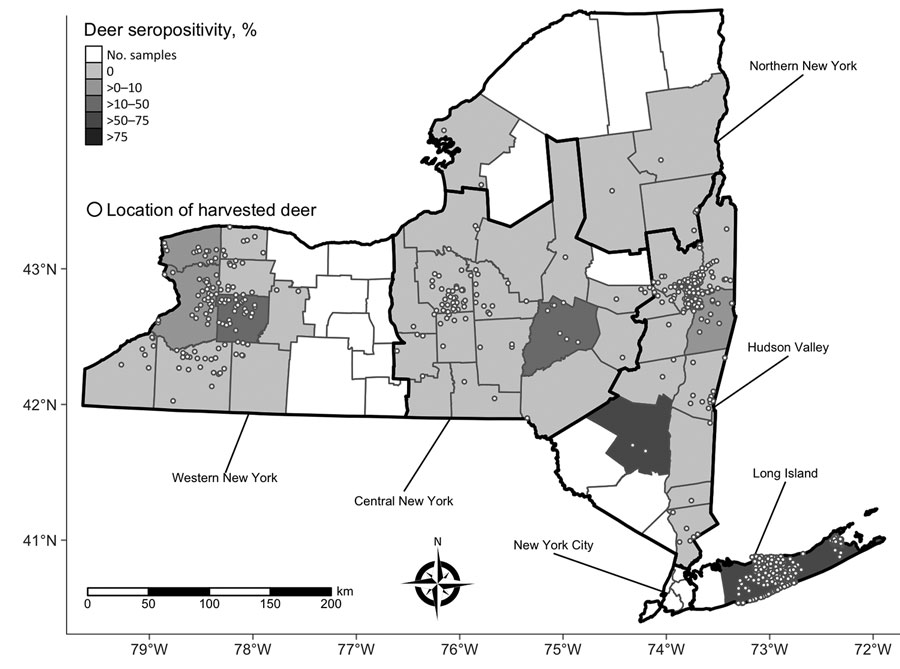Volume 29, Number 1—January 2023
Dispatch
Bourbon Virus Transmission, New York, USA
Figure 1

Figure 1. Sampling of hunter-harvested white-tailed deer blood and Bourbon virus seropositivity by county, New York, NY, USA. Locations (open circles) of harvested deer are randomly jittered within townships to avoid overplotting.
1These authors contributed equally to this article.
Page created: December 09, 2022
Page updated: December 22, 2022
Page reviewed: December 22, 2022
The conclusions, findings, and opinions expressed by authors contributing to this journal do not necessarily reflect the official position of the U.S. Department of Health and Human Services, the Public Health Service, the Centers for Disease Control and Prevention, or the authors' affiliated institutions. Use of trade names is for identification only and does not imply endorsement by any of the groups named above.